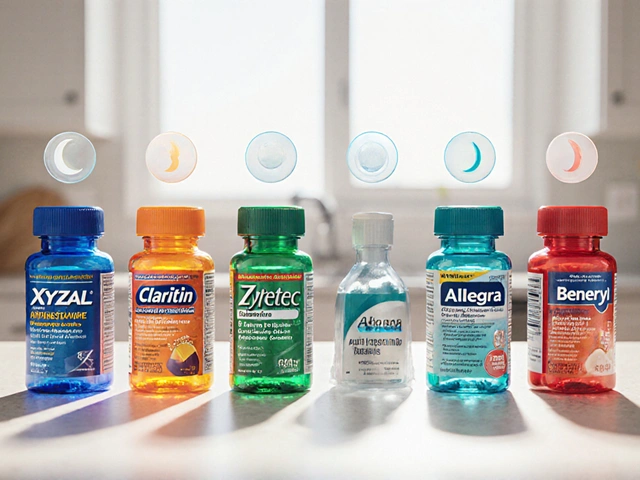Xyzal vs. Other Antihistamines: Which Allergy Reliever Is Best?
October 6 2025Treatment Effectiveness: How to Tell If a Medicine or Therapy Works
When you try a new medication or therapy, you want a clear sign it’s helping. Treatment effectiveness means the treatment does what it’s supposed to do in the real world — not just in lab tests. This page gives practical steps to spot real improvement, compare options, and avoid common traps when reading claims or ads.
Start by defining what “works” means for you. Is it fewer symptoms, better sleep, fewer side effects, or a lower lab number? Pick one or two measurable goals. For example, reduce migraine days from eight to four each month, or lower A1c by 0.5 percentage points in three months. Clear goals make it easy to judge progress.
Track results consistently. Use a simple notebook, phone notes, or an app to record symptoms, side effects, doses, and days. Do it the same way every day so you can compare. If you change dose or add another drug, note that date. Small details matter when you look back and decide if a treatment made the difference.
Check the evidence
Not every claim about a drug is backed by solid proof. Look for randomized controlled trials, real-world studies, or official guidelines. Pay attention to how long the study ran and the size of the effect. A tiny improvement in a big study might mean little for one person, while a strong benefit in a targeted group could be more relevant.
Ask whether the study group matches you. Age, other health issues, and even race can change how well a treatment works. If the trial excluded people like you, its results may not apply. Also check for conflicts of interest: industry-funded studies can be useful, but read the methods and who paid for the work.
Practical tips for everyday testing
Give a fair trial. Most meds need weeks to show full effect; some need months. Follow the prescribed dose and don’t stop early unless side effects are bad. Use simple measures like symptom diaries, clear photo comparisons for skin issues, or home test results for blood pressure or sugar. Share your tracked data with your doctor — it helps make better decisions.
Watch for side effects and weigh benefits versus harms. If a treatment cuts symptoms but makes you feel worse overall, that matters. Consider alternate options or lower doses. Discuss timing too: some meds work best at night, others in the morning. Small adjustments can improve both effect and tolerability.
If you can, compare options directly. Ask your clinician about head-to-head studies or try one option, record results, then switch to another after an agreed washout period. That hands-on comparison helps you see which choice fits your life better.
When in doubt, ask straightforward questions: What outcome can I expect? How long to try it? What are the top side effects? What will we measure to see if it’s working? Clear answers make trials less stressful and results easier to trust.
Track, ask, adjust as needed.
Exploring the effectiveness of Ofloxacin in treating skin infections
I recently came across a study examining the effectiveness of Ofloxacin in treating skin infections. It turns out that this antibiotic has proven to be quite successful in combating various types of skin infections, including those caused by bacteria like Staphylococcus and Streptococcus. Moreover, its oral and topical formulations allow for easy and convenient use. However, it's essential to remember that antibiotics should always be prescribed by a healthcare professional to ensure proper treatment. In summary, Ofloxacin seems like a promising option for treating skin infections, but always consult your doctor before starting any new medication.
Read More...



